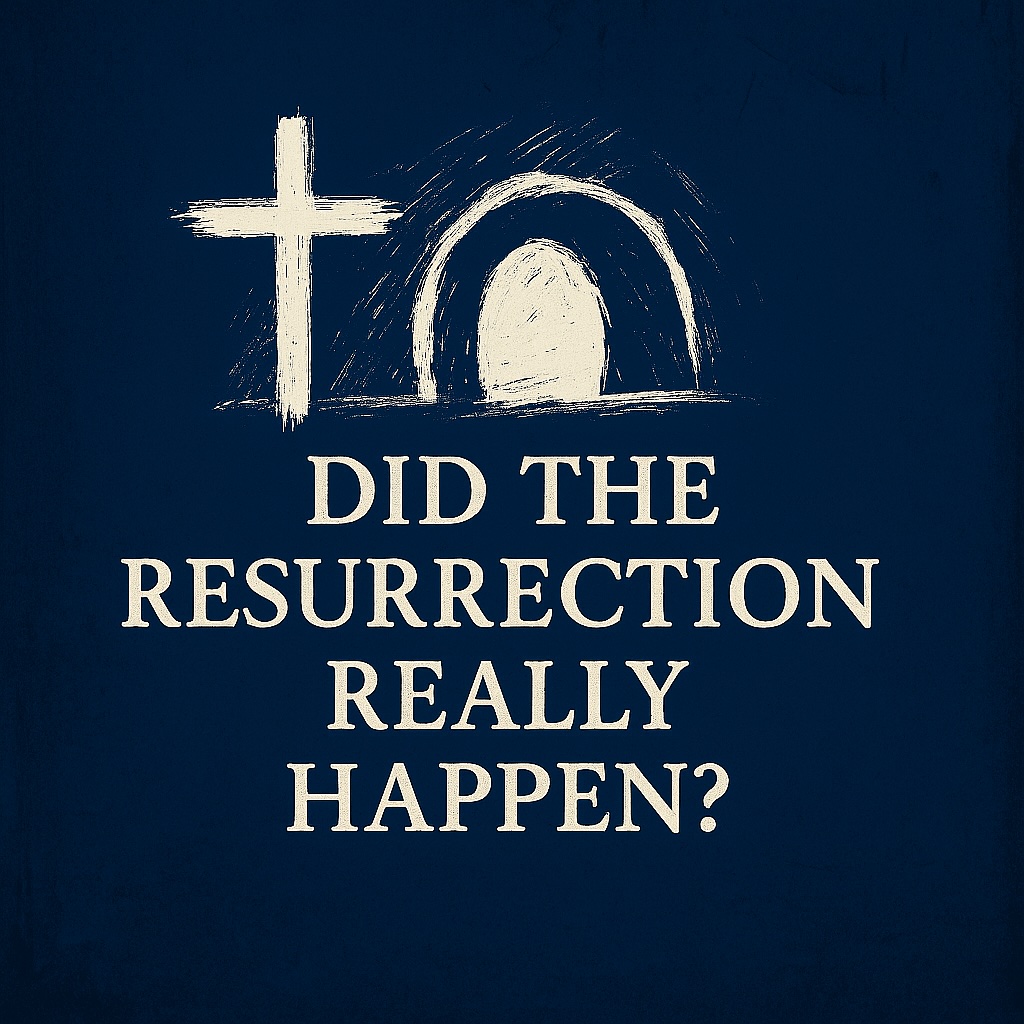Beginning with Truth: How History Confirms Faith
In Christian apologetics, truth is not blind faith. It is a reasoned response to evidence. The resurrection of Jesus is not a myth that grew over time. It is a historical claim that was recorded, witnessed, and verified within years of the event.
Even those who deny Christianity agree that something extraordinary took place in Jerusalem around A.D. 30. History, archaeology, and written testimony confirm it.
When historians examine events from the past, they apply three key rules of historicity:
- The earlier a record is, the better. The closer it is to the actual event, the more reliable it becomes.
- Eyewitness testimony carries more weight than secondhand reports.
- Multiple, independent sources, especially from opposing viewpoints, provide the strongest confirmation.
The resurrection of Jesus meets all three standards with remarkable strength.
Historical Foundations: Documents No One Disputes
Even skeptical scholars such as Bart Ehrman and atheist historians like Gerd Lüdemann agree on several historical facts:
- Jesus of Nazareth was crucified under Pontius Pilate.
- His tomb was found empty soon afterward.
- Many of His followers believed that He appeared to them alive.
- Their faith spread rapidly across the Roman Empire despite severe persecution.
This is where honest historical investigation begins. These facts are not matters of faith alone but of record.
The Apostle Paul’s letters, especially 1 Corinthians 15, are among the earliest Christian writings, composed within about twenty years of the crucifixion. Most eyewitnesses were still alive at the time. Paul records that more than 500 people saw Jesus after His resurrection, many of whom he invited his readers to verify for themselves (1 Corinthians 15:6).
Such statements could have been easily disproven if they were false. Yet they were not.
The Roman and Jewish Records: Enemies Who Confirm the Story
If Christians were the only ones speaking about the resurrection, we might question its credibility. But history does not allow that.
Roman historians such as Tacitus (Annals 15.44) confirm that Jesus was executed under Pontius Pilate and that His followers were convicted for what the Romans called a “superstition.” This superstition referred to their belief that Jesus had risen from the dead.
The Jewish historian Josephus (Antiquities 18.3.3) also wrote about Jesus, stating:
“There was about this time Jesus, a wise man, if it be lawful to call him a man. He was the Christ; and when Pilate, at the suggestion of the principal men among us, had condemned him to the cross, those that loved him at the first did not forsake him, for he appeared to them alive again the third day.”
Even if later Christian scribes emphasized parts of this passage, historians agree that the core of the text is genuine. It affirms that Jesus lived, was crucified, and that His followers claimed to see Him alive. One main point of this passage to prove its authenticity is the use of the past tense “He was the Christ..”. Christians do not speak of Jesus in the past tense and would have said He IS the Christ.
In Jewish writings such as the Talmud, the crucifixion and the empty tomb are not denied. Instead, they are explained away by claiming that the disciples stole the body. Ironically, this argument confirms two important facts: that the tomb was empty, and that no one ever produced a body.
When even opponents confirm details of an event, historians call it “hostile corroboration.” It is one of the strongest forms of evidence available.
Eyewitnesses Who Refused to Deny the Truth
The core of the resurrection story rests on testimony.
Every major claim in the New Testament is rooted in people who said, “I saw Him.” Peter, John, Mary Magdalene, Thomas, and hundreds of others gave personal accounts of the risen Jesus. These were not stories told long after the fact. They were immediate, firsthand experiences.
None of these witnesses gained wealth or comfort from their claims. Instead, they faced exile, imprisonment, and death. Yet not one of them recanted.
People will die for something they believe is true, but no one willingly dies for something they know is false. The disciples had every reason to remain silent, yet they chose to speak because they knew the truth.
Beyond the Empty Tomb
The empty tomb is one piece of evidence but not the full story. The greater proof is found in what followed.
A group of terrified disciples became fearless preachers. The same Peter who denied Jesus three times soon stood before a crowd in Jerusalem declaring, “You killed Him, but God raised Him from the dead.” (Acts 2:23–24)
Within years, entire communities formed around this truth. Historians record that Christianity spread across the Roman Empire with astonishing speed. It could not have grown so rapidly if its foundation had been a lie.
The resurrection turned doubt into conviction, fear into courage, and grief into joy.
The Philosophical Reality: Why the Resurrection Still Matters
From a philosophical point of view, the resurrection answers humanity’s oldest questions. Why are we here? What happens after death? Is there truth beyond what we can see?
If Jesus did not rise, death has the final word. If He did rise, everything changes.
The resurrection is more than proof that Jesus lived again. It is proof that He is alive now. He was not simply revived; He was resurrected into a glorified body that will never die again.
That is why believers speak of Jesus in the present tense. He is, not was. He reigns, not reigned. He still transforms lives, heals the broken, and reveals truth because He is not in a tomb. He is on the throne.
Why This Evidence Still Demands a Response
Whether you approach this topic as a skeptic or a believer, the resurrection confronts you with a choice.
If Jesus truly rose from the dead, as the evidence shows, then He is who He said He is: the Son of God and the Savior of the world.
That truth means everything.
It means truth exists.
It means death is defeated.
It means hope is not just an emotion but a reality.
The resurrection is not wishful thinking. It is the hinge of human history, the moment when heaven touched earth and nothing would ever be the same again.
If you are searching for truth, do not avoid history. Examine it. The evidence for Jesus’ resurrection does not weaken faith; it strengthens it.
Read the eyewitness accounts. Study the records. Then ask the question every person must face:
If Jesus truly rose from the dead, what will I do with that truth?He is not in the past.
He is not in the grave.
He is alive.

